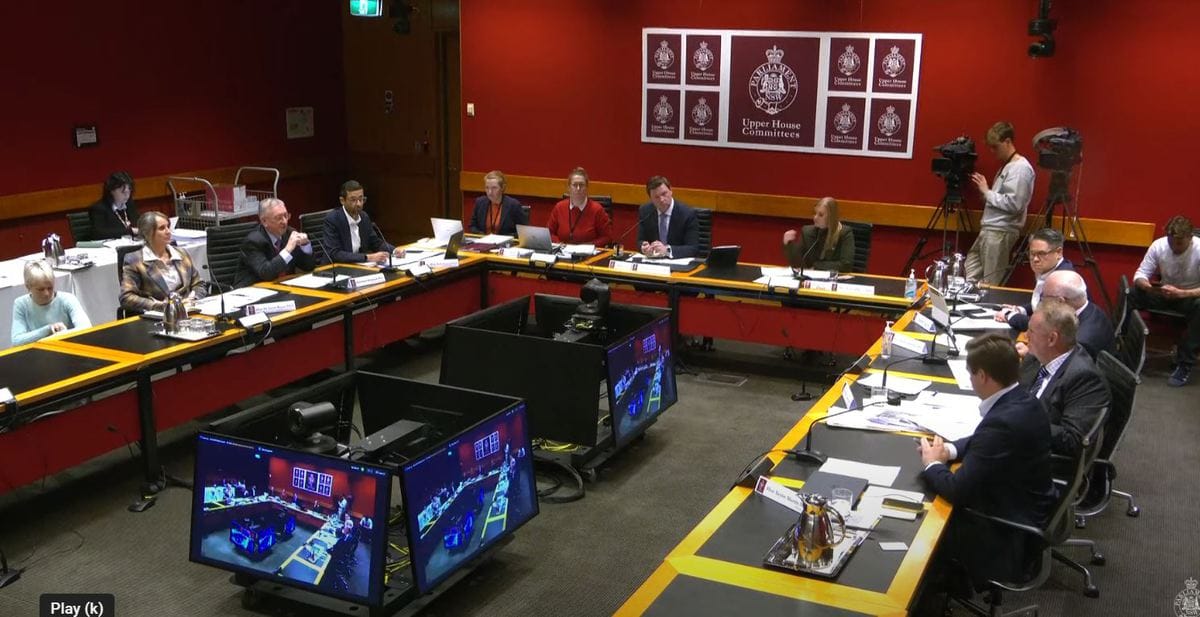During three days of public hearings, the Parliamentary Select Committee On The Proposal To Develop Rosehill heard from 34 individual witnesses, speaking on everything from animal welfare to state government planning policy and transport developments.
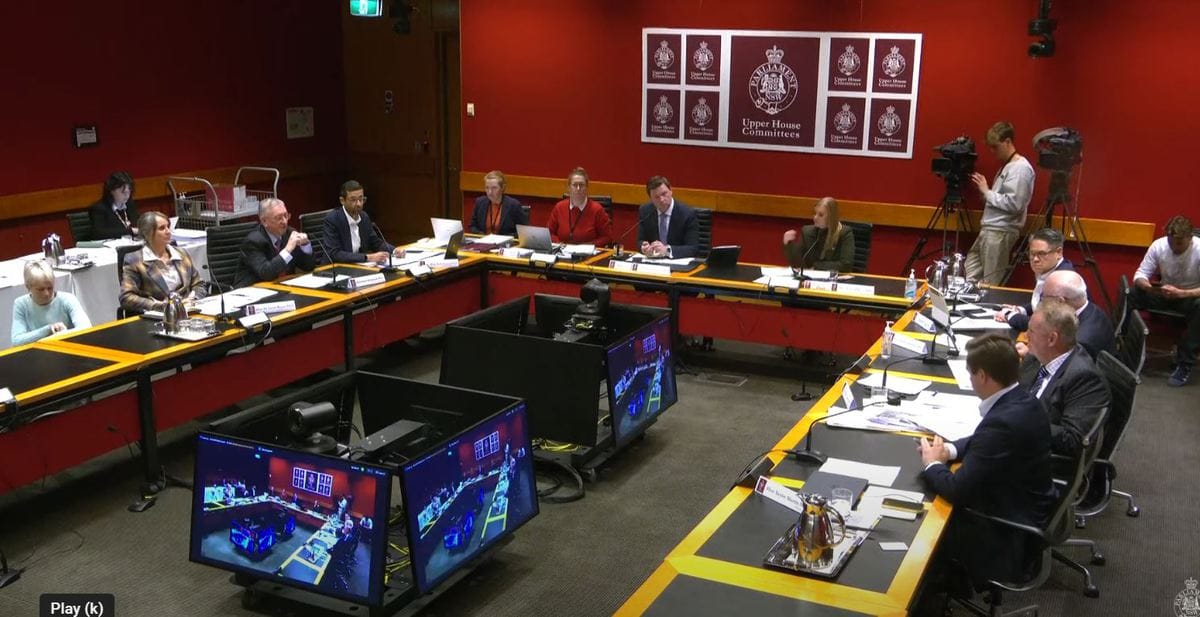
The terms of reference for the Upper House Committee were broad, outlining seven key areas plus a catch-all “any other related matters”.
The 10 Committee members — three Labor, two Liberal, one National, one Green, one Animal Justice Party, and two Independents — spent 21 hours, 40 minutes, and 20 seconds exploring all areas of a proposal that, while it was about a race club’s plans to possibly sell off its major asset for housing, encompassed so much more.
There were five main themes to emerge from the Committee’s questioning and the answers of witnesses over those three days. We have explored what was spoken about each in the summary below.
The suitability of the Rosehill site?
Fundamental to any idea of constructing a 25,000-dwelling suburb where Rosehill lies is if the site itself is suitable for such a development. Before you even get to that you have to come to an agreed, improved value. This varied between $1.6 billion and $23 billion at the hearing.
Australian Turf Club chairman Peter McGauran said a valuation of current zoning would be $1.6 billion and that the mooted $5 billion put forward by consultants MostynCopper would depend on rezoning and a metro station. Pressed further on that value McGauran said: “I’m yet to find any valuer or large-scale experienced property developer who disagrees with $5 billion.”
Later in that second session, Racing NSW chief executive Peter V’landys said the project's current valuation was $23 billion, which would be realised over 30 years.
Leaving aside the quite dramatic differences in estimate values, it all relies on constructing a Metro station at the site, which will not be finished until at least 2032.
Questions over site contamination and flooding around the Rosehill track also exist, and testing is underway to determine whether the land on which the track is located is also compromised.
Contamination or flooding issues must be ascertained before the Metro project progresses through that section. It will undoubtedly shape the cost and capacity of any 25,000 (or 40,000, depending on who you listen to) dwelling development at the site.
The alternate plans for a second racecourse
While other options have been mentioned, including the redevelopment of Warwick Farm or another western Sydney site, the Brickpit site at Homebush has attracted the most attention as a venue for a relocated racetrack.
The phrase “Brickpit” was used 18 times in the first hearing, 42 times in the second hearing and 50 times during the third hearing.
In the first hearing, John O’Shea described the Brickpit as unsuitable, a myth by former ATC chairman Peter Hall and “no chance” of happening by Gai Waterhouse.
At the second hearing, McGauran conceded that you’d be “potentially constructing a track running around the clifftop” but that it was a possibility worth exploring. At the same time, NSW Trainers’ Association executive Richard Callender said his members thought the idea was “fanciful”.
V’landys said the Brickpit idea was generated by Racing NSW and his chief operating officer Graeme Hinton said the prospect of replacing Rosehill relied on people “thinking big”.
“We pride ourselves on having a can-do attitude and not short-term thinking. We don't try and find problems why things can't be done,” Hinton said.
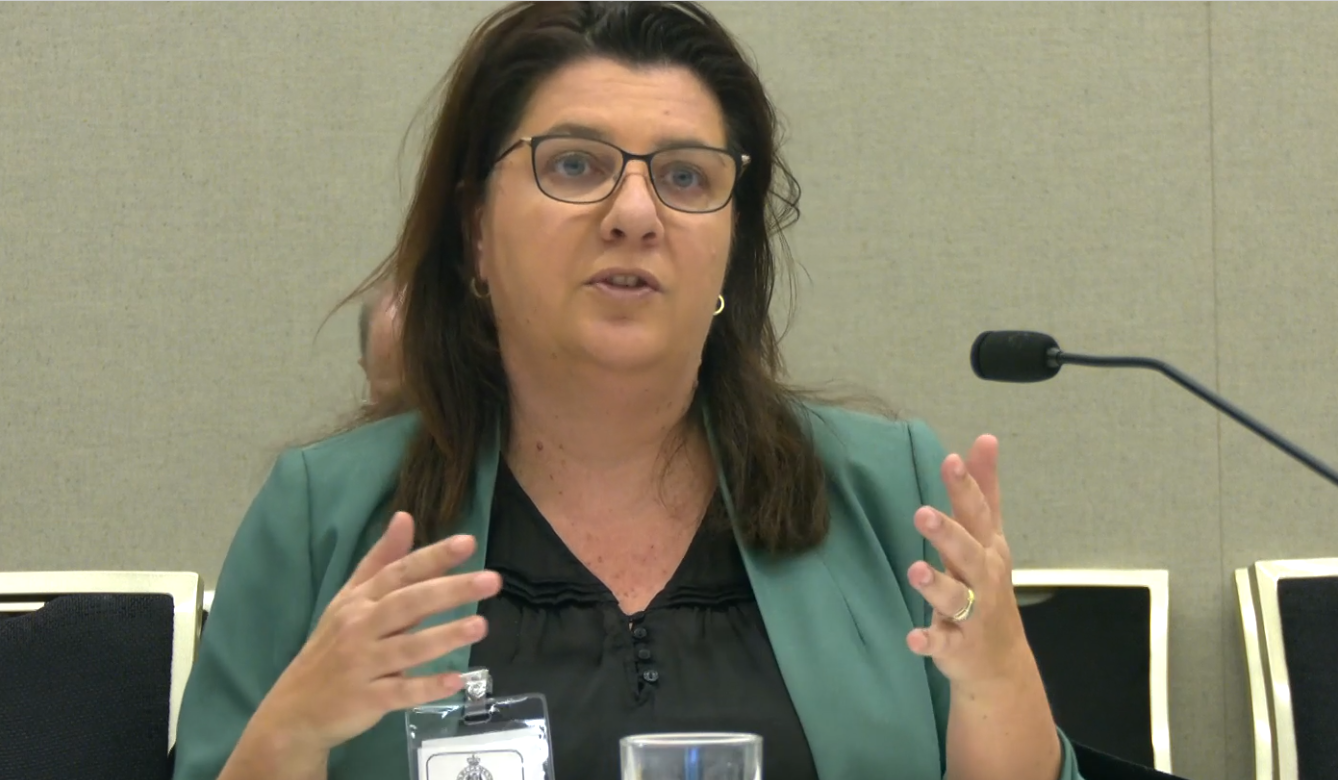
However, Hinton conceded they had yet to discuss the project with the Sydney Olympic Park Trust, which controls the site.
In the final hearing, the Brickpit site was put further under the microscope. Sydney Olympic Park Authority (SOPA) chief executive Carla Armaret says that zoning permits attached to land at Homebush, known as the Brickpit, would make it challenging to build a track.
“At the moment, under the current planning controls, a racetrack would be prohibited,” she said.
She also revealed that no one from the ATC or Racing NSW had inspected the site with her.
What also became apparent is that Racing NSW won’t allow the ATC to proceed with Rosehill without a clear plan for building a new racetrack in western Sydney.
“It might be at Penrith. It might be at Warwick Farm. It might be somewhere completely different. But the point is that Racing NSW requires the replacement of Rosehill in order for this to proceed,” V’landys said.
But Racing NSW chair Saranne Cooke said a revamp of Warwick Farm was unlikely to be in the mix.
“We'll wait for that and make the decision. But the early indication is it will be very expensive,” she said on the final day.
The functions and power of Racing NSW
This was the most contentious aspect of the entire hearing. It came on the Committee's agenda from the first witness, when Gai Waterhouse questioned the regulator’s involvement in the project and the tenure of CEO V’landys.
The phrase ‘Racing NSW’ featured 135 times in the first hearing and then 153 times in the second and 80 in the third. The word ‘V’landys’ was featured 24, 244, and 15 times, respectively.
V’landys became the central character of an action-packed second act of the public hearings, using his time in front of the Committee to suggest “wealthy breeders” were conspiring against him.
He also labelled his critics as “cheats, liars, undesirables and cowards” and had a terse exchange with Independent MP Mark Latham.
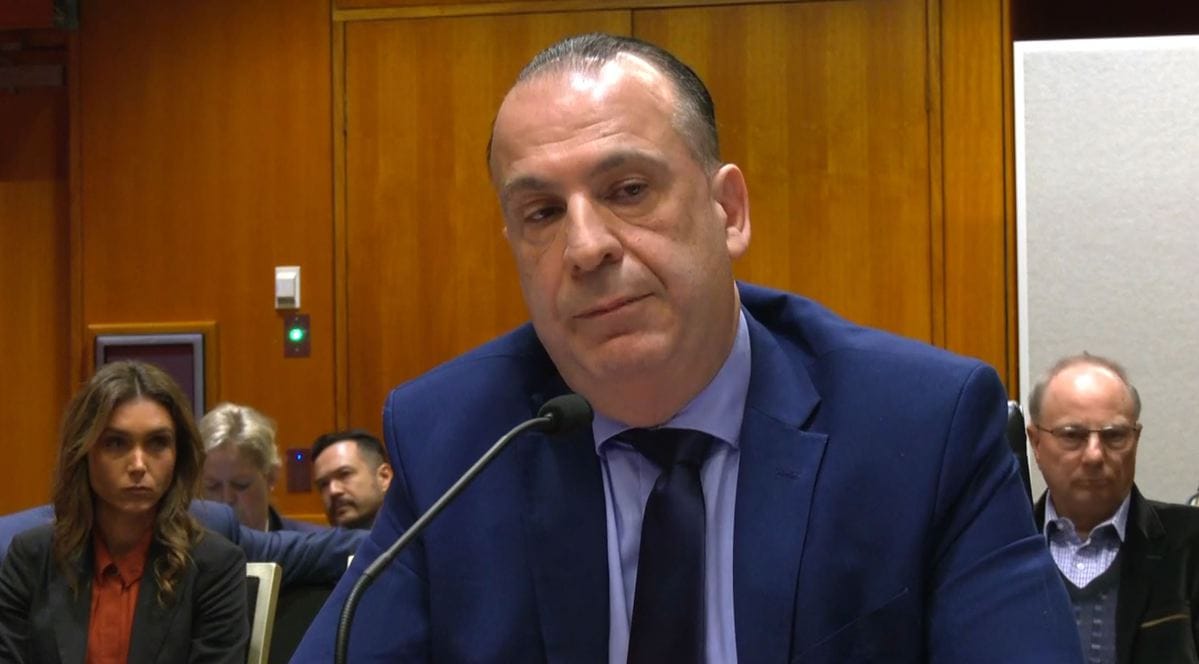
There were accusations about a toxic culture at Racing NSW, and V’landys was also questioned about whether he interfered in NSW stewards’ inquiries and whether any ex-employee had signed non-disclosure agreements.
“That someone can make a wild accusation with absolutely no substance and affect me personally for working hard for the racing industry - it's deplorable,” V’landys said.
Racing NSW attempted to submit documents at that hearing, but they appear to have been rejected, and The Straight believes they were referred to the privileges committee.
Leaving the theatre aside, and there was plenty of theatre, the Committee was focused on how Racing NSW operated and whether V’landys had too much power.
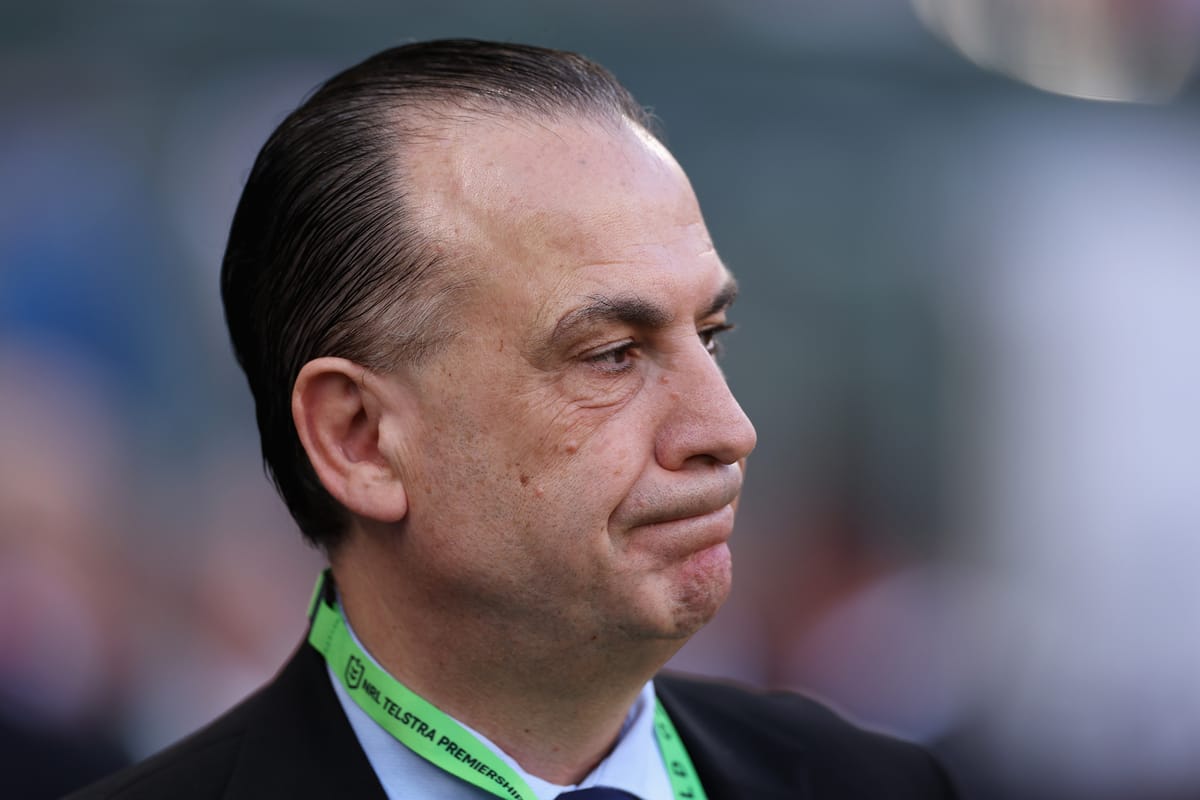
The delegated power V’landys has under the Racing NSW board could do with “a fresh pair of eyes” according to Racing NSW board member Garry Charny.
However, Cooke was unequivocal in her support of the CEO, saying he was the best man for the job and “we have full oversight of the decisions that are made within delegation”.
Racing NSW’s accounting practices were also highly scrutinised, especially using provisions to set aside funding for future prize money and infrastructure.
It was implied through the hearing that several written submissions surrounding Racing NSW remained private. These may also shape the Committee’s final recommendations.
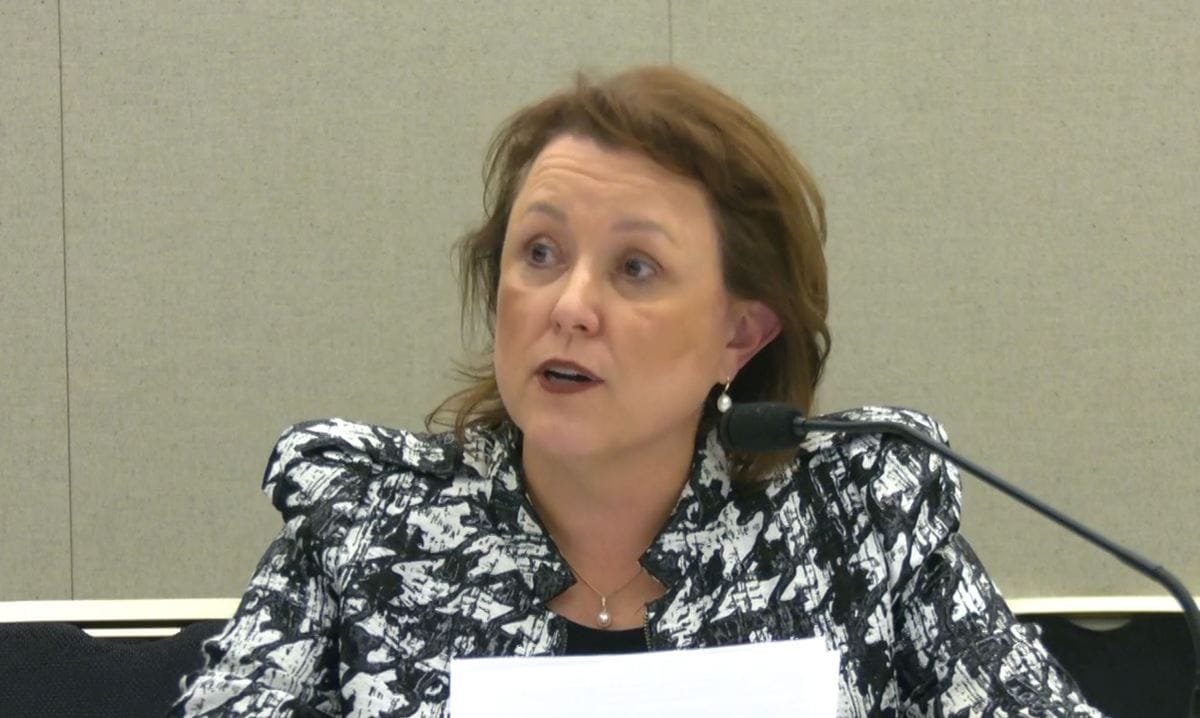
The functions of the Australian Turf Club
The ATC’s processes and governance were also put under the spotlight across the three days.
Asked if she was shocked that the Rosehill proposal had been taken to the state government and Racing NSW before being discussed among a full complement of her fellow board members, Caroline Searcy said: “Certainly from a board point of view, it's perhaps not the best governance,” she said.
The Committee heard more damning criticism from former chairman David Hall about the ATC’s actions.
“It's appalling governance. The executive have to act in accordance with the board. It is not the right of the executive to make decisions without board approval and board support on issues of this significance,” he said.
Steve McMahon, the ATC’s head of membership and corporate affairs, and McGuaran appeared at the second hearing.
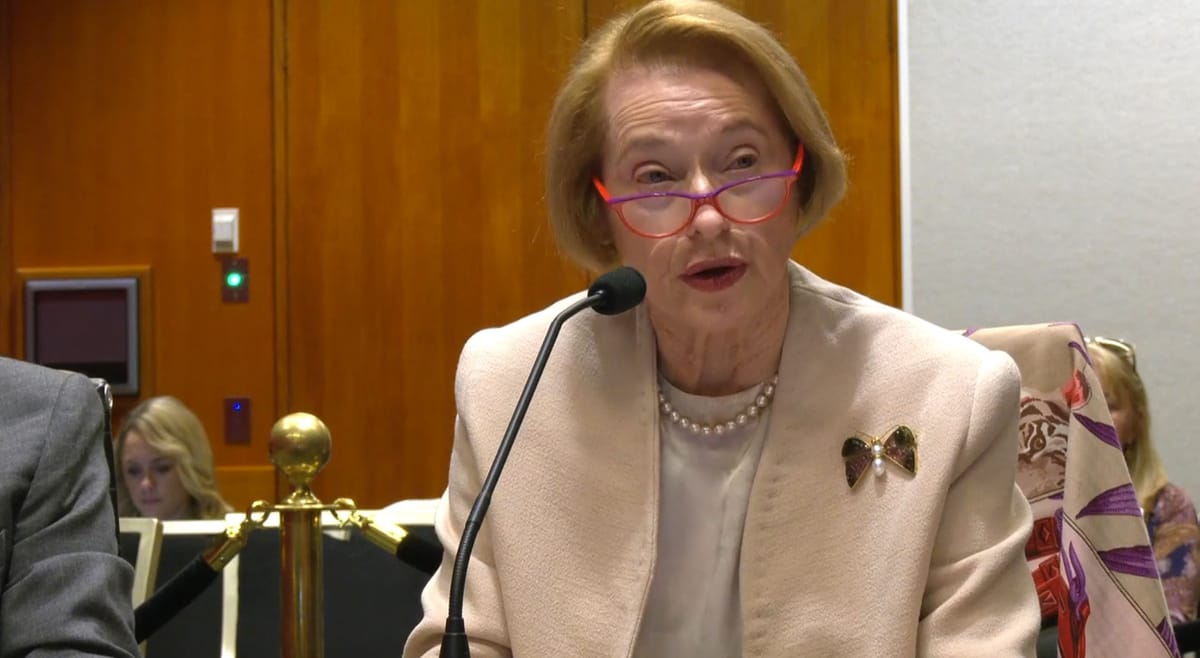
ATC CEO Matt Galanos did not give evidence.
McMahon appears to be the architect of the proposal within the ATC and said the idea came to being shortly before an October 30 meeting with the NSW Premier Chris Minns, a longtime friend.
McGauran defended the decision when asked about going to the government before the ATC board.
“Firstly, an NDA, a non-disclosure agreement, had been flagged. Secondly, I wanted Mr McMahon to test the government,” McGauran said.
He said the board had two briefings about the project before the proposal went public. However, the board wasn’t informed until November 21, the same day as the Racing NSW board and weeks after V’landys.
That process drew scrutiny from the Committee as did the decision to abandon the board’s consultation sessions with members and stakeholders after enduring a torrent of negative feedback, led by Waterhouse and Chris Waller.
The ATC has always said the final decision requires a majority of members’ support.
The process undertaken by the government
The question the Minns government was scrutinised over through the Committee hearings was whether the process undertaken with the ATC was truly unsolicited.
The premier's department advised the ATC to follow the unsolicited proposal guidelines, which does not itself indicate that it was solicited. The ATC insists it came to the government with the idea.
Why does it matter? Well, it is following the government’s own probity rules, and if it is found not to have followed protocols, then the process can’t continue. Racing NSW has already spent $300,000 on due diligence on this process on the ATC’s behalf.
Members of the Committee, including senior Liberal Damien Tudehope, are clearly not convinced about the unsolicited nature of the Rosehill proposal. There is political value to be had from this situation and pressure to be put on Minns.
This issue is the fundamental driver behind the political inquiry, although the drama around Racing NSW probably sidelined it.
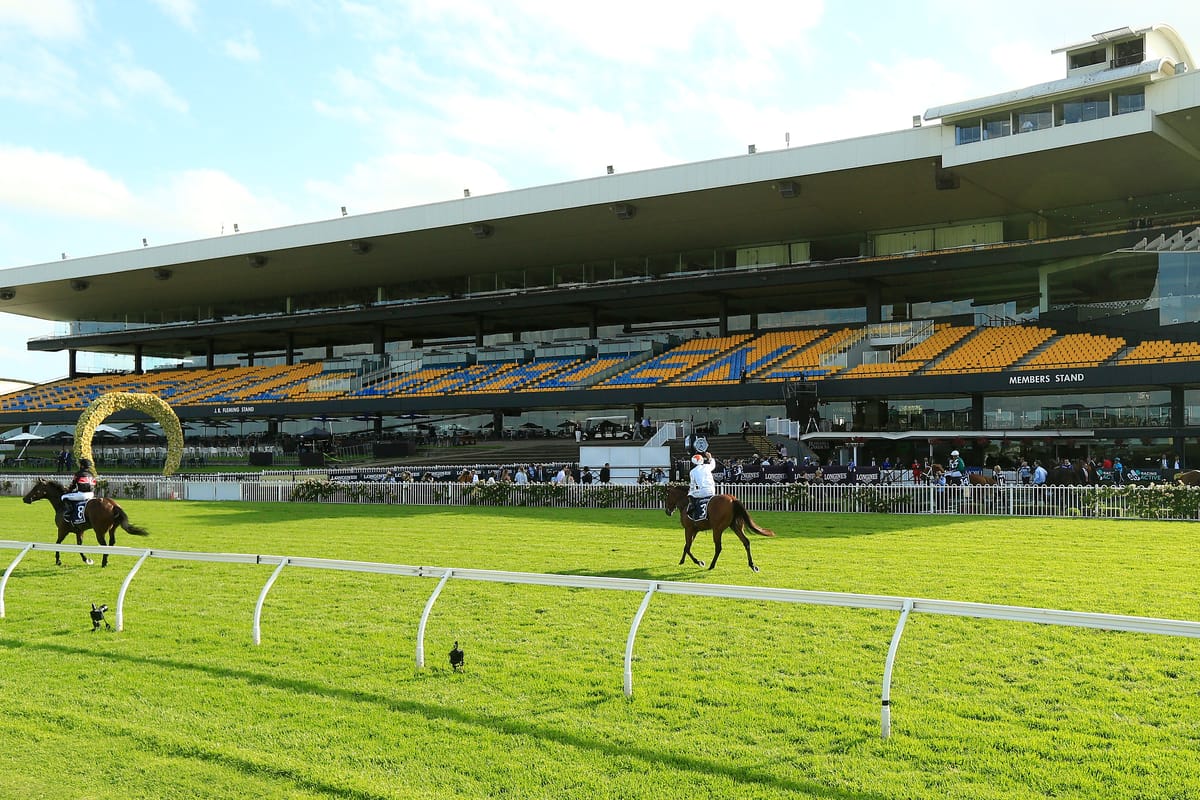
Where to now?
While the public hearings have been completed, the Committee can hold any number of in-camera or private submissions. These will not be made public at any stage but could be used to inform the Committee’s recommendations.
Several times during the hearings, the volume of confidential written submission to the Committee was alluded to. Any of these people could be called to speak in confidence.
A report is due by November 30 and is likely to contain recommendations. The government can reject those recommendations, but it must provide a suitable reason for its decision.
The Committee could recommend that the inquiry be extended or that specific inquiries be set up into any of the issues discussed above. Given the amount of scrutiny put on Racing NSW, it is feasible that the Committee recommends a specific inquiry in that area.

